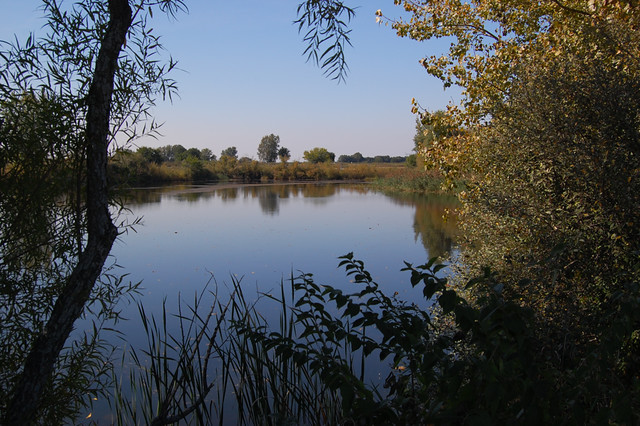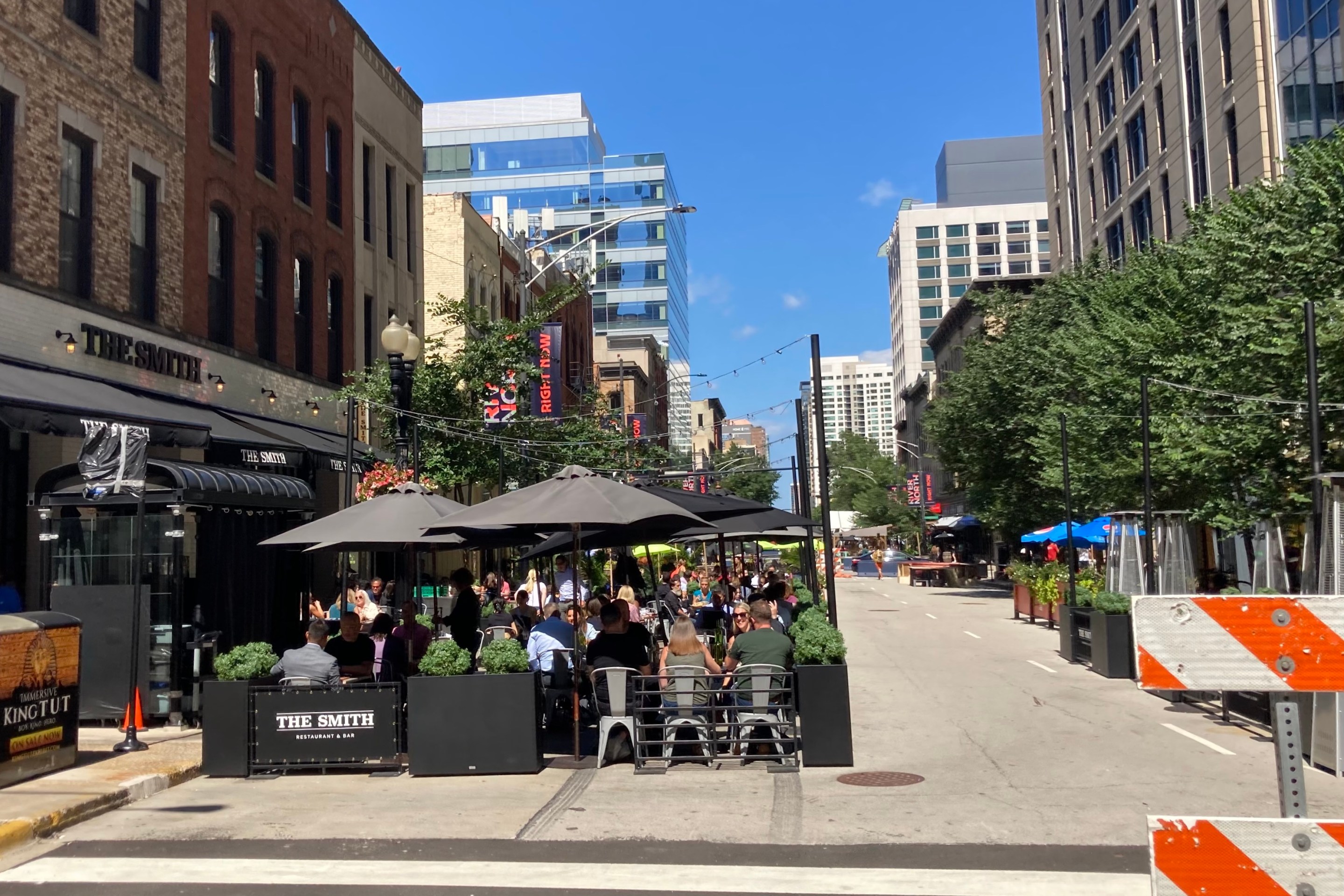Seven Ways to Stop The Illiana Boondoggle
4:58 PM CDT on October 10, 2014

Two votes yesterday by a committee of the Chicago Metropolitan Agency for Planning, Chicagoland's federally-designated regional planning organization, have cemented CMAP's approval of the sprawl-inducing, budget-busting Illiana Tollway. Since federal transportation dollars can only be spent on projects included in an adopted regional plan, this gives Governor Pat Quinn and the Illinois Department of Transportation the consent that they needed to continue preparations for the Illiana Tollway.
South suburban legislators are happy that Quinn is steering the dollars in their direction, and spoke up in favor of the road yesterday -- many saying that the Illiana would free them from the scourge of truck traffic on existing roads. State Senator Pat McGuire (D-43) said the Illiana "would improve the environment" and "save lives." He didn't specify how, especially since IDOT's own analysis says that the Illiana would increase car traffic (and presumably car crashes) in the study area, decrease truck traffic only minimally, and result in more smog and acid rain.
State Representative Al Riley (D-38) heads the house's mass transit committee, and brushed aside criticism of the road in this spirited, if garbled, testimony yesterday:
The Tier 2 EIS just came out, so everybody's supposed to be stupid. [People are saying] the FHWA, you know, who did the report, doesn't know what they're doing. Their pronouncements don't make any sense. Well, of course they do. Everything made sense throughout the entire process. Of course they know what they're doing!
Despite yesterday's vote, there are still several ways the Illiana could be stopped well before the bulldozers arrive to pave over every pristine prairie and family farm in their path. Here are seven possible routes:
1. The state legislature could rescind the law giving IDOT authority to enter into a public-private partnership, or otherwise step in and keep IDOT from spending the funds it's budgeted for the project. IDOT's idea of a "PPP" amounts to bribing private investors with a $250 million (minimum) up-front payment, plus additional money when toll revenues fall short. Another avenue the legislature has is preventing IDOT from spending its $250 million budget for acquiring land, relocating utilities, and other site-preparation work.
This seems rather unlikely, given the project's avid proponents in the General Assembly. State Senator Toi Hutchinson (D-40) spoke at yesterday's meeting, reminding the policy committee that she helped craft the enabling legislation in 2010. She added that this project "is important to us," referring to her south suburban district.
2. A more likely route is through the environmental evaluation process, which is already well underway. IDOT released a Tier 2 environmental impact statement for the road on September 26, but it -- and its predecessor -- have critical flaws that the Environmental Law & Policy Center hopes could trip up the road. The EIS outlines for the Federal Highway Administration, and the public, how IDOT intends to mitigate the road's impacts to people, wildlife, and air and water quality.
One of ELPC's challenges focuses on how IDOT forecasted population growth in the area around the Illiana corridor. In a lawsuit filed last year, ELPC says that the "purpose and need" section of the state's earlier, "Tier 1" environmental impact statement made population forecasts assuming that the Illiana and other, unfunded, highways would be built, and therefore that highway-induced sprawl would add another 150,000 residents to Will County. This sounds like circular logic: IDOT says it needs to build the Illiana because it would create sprawl, which would create traffic, which is why it needs to build the Illiana.
IDOT's forecast methodology [PDF] differs from the one that CMAP uses, but since CMAP is the area's Metropolitan Planning Organization, its forecasts are supposed to take precedence. In particular, as the Metropolitan Planning Council pointed out last year, IDOT expects that the region will continue to sprawl forever -- while CMAP expects that its GO TO 2040 plan will guide regional growth, and encourage investment and construction within already-developed areas (like the communities where the voters who elected Hutchinson, McGuire, and Riley live).
If ELPC wins this case, the Tier 1 EIS would be invalidated, and the Federal Highway Administration would probably not accept the Tier 2 EIS. The mismatch between optimistic, pre-recession population and traffic forecasts and actual, much lower traffic has contributed to numerous toll road failures across the country, according to a Denver Post investigation.

3. The curious process whereby CMAP held two different meetings this week, with votes that contradicted one another, is the focus of ELPC's second lawsuit challenging the Illiana. ELPC contends that state law gives the CMAP board final authority on approving changes to the GO TO 2040 regional plan. Currently, the MPO Policy committee holds that authority. The board voted to remove the Illiana from the plan on Wednesday, but the MPO Policy committee voted to include the Illiana on Thursday. In most institutions, the board would have final say, but apparently not at CMAP.
The MPO Policy committee is essentially a "vestige" from before CMAP was created, MPC's Peter Skosey said. CMAP was created when the Northeastern Illinois Planning Commission was merged with the Chicago Area Transportation Study. The policy committee inherited part of CATS' role, which was to program federal transportation dollars -- a narrower agenda than the board's wider task of maintaining the regional plan.
4. Outside the legal process, there are plenty more opportunities for paperwork, and budgets, to stop the Illiana. ELPC's deputy director, Kevin Brubaker, said the state might not come to an agreement with private investors. "Can the state offer a big enough check so that the vendor is willing to undertake the project?" He explained that there's a flip side to that: "If the vendor is demanding so much money to build and operate this road, [maybe] the state blinks and walks away."
IDOT still has yet to quantify the maximum amount of money it could or would spend to build the Illiana. So far, IDOT has said that it would spend $250 million acquiring land and moving utilities, and another $250 million would pay the first "availability payment" to the private investor. Nobody has yet determined how many availability payments would be made available.
5. Governor Quinn could also have a change of heart, and later decide that the road isn't in his, or the public's, best interest. Brubaker said that public opinion could swing further against the tollway, once "taxpayers become so sickened at the subsidy." That would require, though, that Governor Quinn and the legislators actually listen to taxpayers.
6. Bruce Rauner, who has been quiet on the Illiana, might win the governor's race and stop IDOT from wasting any more money on the road. The Journal Standard from Freeport, in northwest Illinois, recently editorialized against the Illiana Tollway. Their editors pondered: "That Rauner, who portrays himself as a fiscal conservative, does not come out vehemently against such a waste in tax dollars is mind boggling."
There's recent precedent for this. The newly elected governor of Virginia, Terry McAuliffe, recently suspended a new road where the PPP agreement had already been signed, bonds had already been sold, but yet construction had not yet begun because the U.S. Army Corps of Engineers refused to issue permits to destroy wetlands.
7. Another unlikely, but possible, path is that the FHWA could reject the final environmental impact statement. A 30-day review period for the EIS ends on October 26, and afterwards FHWA could decline to issue a favorable Record of Decision. If FHWA does what they should, they'll pay attention to the objections already submitted by organizations like MPC, ELPC, and Openlands, and reconsider the need for the road.
Stay in touch
Sign up for our free newsletter
More from Streetsblog Chicago
Service boost means BNSF Line will get Metra’s first-ever across-the-board weekend schedule, starting April 29
In addition, Halsted Street station will get weekend service, and Downers Grove's Fairview stop will become an off-peak stop.
Today’s Headlines for Friday, April 19
Tasty news: Friedman Properties is trying to break the Clark outdoor dining stalemate by applying for street closure permits
Mayor Johnson's administration and Ald. Reilly haven't yet found common ground on bringing back the popular car-free zone. Will this make the difference?
Today’s Headlines for Thursday, April 18
Roger that! Streetsblog SF editor Roger Rudick offers constructive criticism of Chicago’s downtown bike network
"There were blocks that felt very safe and very secure," he said. "But then you're immediately – voom! – disgorged into three lanes of moving traffic with no protection."



